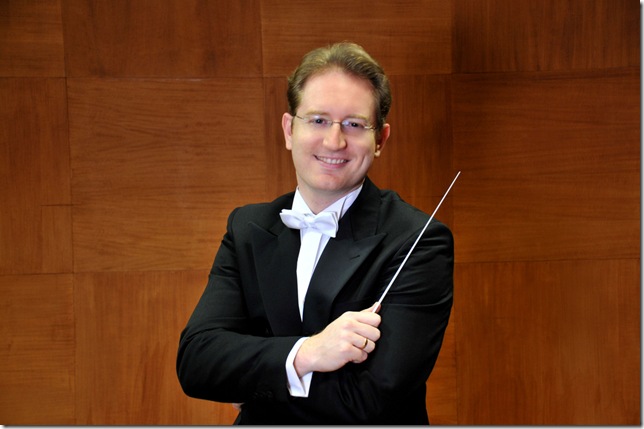Conductor Ramón Tebar has done it again. He has taken the enlarged Palm Beach Symphony of 75 players to new heights of perfection, drawing a record audience that filled Donald Trump’s glorious wedding hall at Mar-a-Lago on March 16, the day after he won the Florida Republican primary.
Perhaps many were curiosity-seekers. No matter, the great and the good were augmented by the young and the restless drawn to hear classical music for the first time, there wasn’t an empty seat in the house. Evidence of a new classical music audience was pointed up by applause between movements: loud and often. Publicized as a “Fantastique” evening, it had three works: Joaquin Turina’s Dansas Fantasticas, a suite from Richard Strauss’s opera Der Rosenkavalier, and Berlioz’s Symphonie Fantastique.
Opening with Turina, I was reminded that we heard this same work in Palm Beach Symphony’s concert at the Flagler Museum last year; only then it was introduced by the Boston Brass. It begins with a leaping dance tune from Northern Spain called a jota. Lush strings capture enchanting Spanish music with rolls and winding themes as the orn produces his own lush impeccable sound. Brilliant interruptions come from the flutes and piccolos as the dance gains momentum.
The second movement, “Fantasy,” with five quick beats per measure is from a Basque dance, the zortziko. Strings and a pastoral oboe sound put the lovely Basque countryside in mind. Last, the “Farruca,” a type of flamenco dance has a dramatic opening and the music creates the lovely Andalusian sounds that start your heart and mind racing. It’s sunny Spain music, busy and brassy with a warm cello solo, the wood winds prominent at times. A big musical full stop brings this exciting trio of dances to an end.
Next came music from Richard Strauss’s fifth opera, Der Rosenkavalier, arranged by Polish conductor Artur Rodzinski in 1944. Personally I prefer the composer’s arrangement which he made soon after the premiere, directed by Max Reinhardt, in Dresden in 1911. The music transcends minor differences as the Palm Beach Symphony’s magnificent full orchestral opening with horns whooping their way excitedly up the scales establishing their new big orchestral status and sounding absolutely superb. Quieter passages follow as the strings play the Marschallin’s love song for Count Octavian, her 17-year-old lover. The oboe takes up the young boys tune as the clarinet picks out Sophie’s melody. Then harp, strings and wood winds carry the melodies forward. The full orchestra fused together and with some incredibly good horn playing swelled to a massive crescendo that took one’s breath away.
Tebar was in his element, getting the best from his players, as a drum roll introduced the first full version of the Rosenkavalier waltz theme, which set heads around me swaying. Alas, some ragged playing found its way into the waltz theme’s second recapitulation. Memorable here was the reconstruction of the famous Act III trio, played so lovingly by everyone; it was perfection. Overall, this music was well-received.
The five-movement Symphonie Fantastique of Hector Berlioz followed intermission. It’s a daunting work, written by a young composer of 27, madly in love with an Irish Shakespearean actress, Harriet Smithson, whose touring company played Hamlet in Paris. Berlioz was infatuated by her performance as Ophelia, but she would not return his attentions, out of which he decided to put his rejection and sufferings to music.
From the start, gentle violins and strings brought forth heavenly music, with Tebar taking it slowly as the music ruminates until trilling violins introduce a great orchestral crescendo. In the second movement, the violins sounded lovely and Tebar had all the rhythms under tight control.
The orchestral playing was most impressive in third movement, and Tebar’s baton technique was a joy to watch. After the raucous music of the March to the Scaffold in the fourth movement, the symphony closes with the Witches’ Sabbath, in which Berlioz conjures witches, sorcerers and monsters of every kind with diabolical orchestral effects: Haunting strings, mean clarinet screeches and deep bassoon notes.
Tebar brought in each section of the orchestra with precision in the movement’s fugue, followed by a rowdy quick march, and then the timpani and full brass section blasted out the work’s conclusion with roars of applause and bravos galore, all of them well-deserved by Tebar and his orchestra. But what was scheduled for 49 minutes took just under an hour. Luckily, the house lights were dimmed to half capacity, the idea of Kevin Smith, house manager, who thought that since this symphony is programmatic music, listeners ought to be able to read their program notes as it progressed. Good thinking. There’s no stopping how young managers are going to save classical music for future audiences with more ideas like this.
